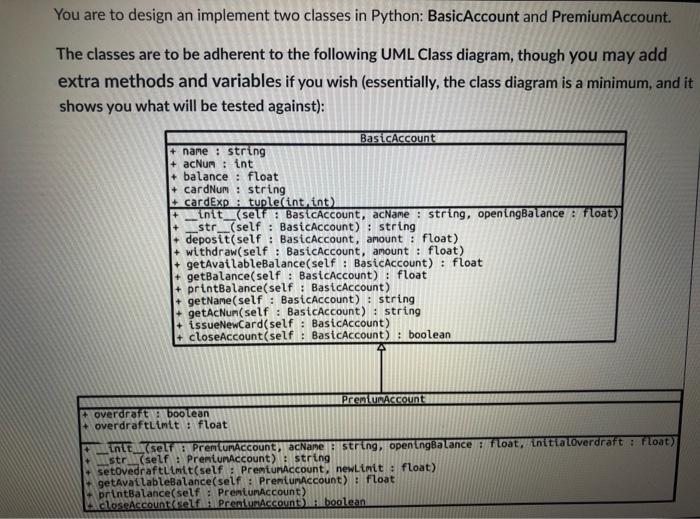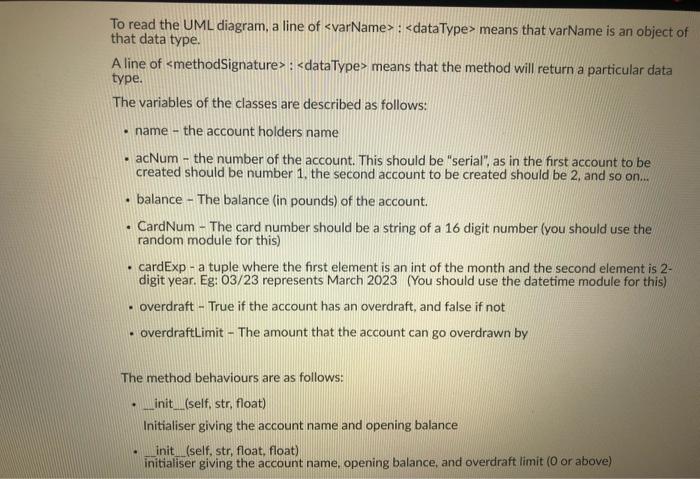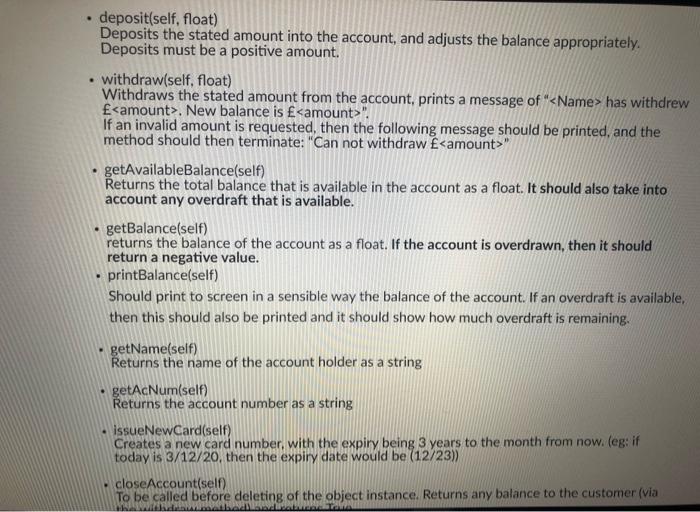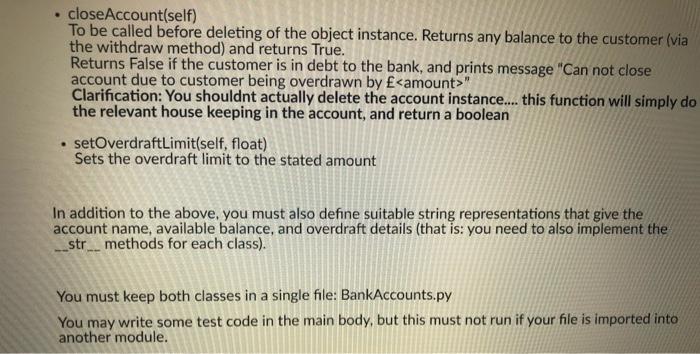Answered step by step
Verified Expert Solution
Question
1 Approved Answer
Do not use any other libraries than specified..The program should be written in Python Do not use any other libraries than specified..The program should be




Do not use any other libraries than specified..The program should be written in Python
Do not use any other libraries than specified..The program should be written in Python
You are to design an implement two classes in Python: BasicAccount and Premium Account The classes are to be adherent to the following UML Class diagram, though you may add extra methods and variables if you wish (essentially, the class diagram is a minimum, and it shows you what will be tested against): BasicAccount + name : string + acNum : int + balance : float + cardNum : string + cardExp: tuple(int int) init__(self : BasicAccount, acName : string, openingBalance : float) str_(self : BasicAccount) : string + deposit(self : BasicAccount, amount : float) + withdraw(self : BasicAccount, amount : float) + getAvailableBalance(self : BasicAccount) : float + getBalance(self : BasicAccount) : float + printBalance(self : BasicAccount) + getName(self : BasicAccount) : string + getAcNun(self : BasicAccount) : string + issueNewCard(self : BasicAccount) + closeAccount(self : BasicAccount) : boolean + PremtumAccount overdraft boolean overdraftLintt : float init self 3 Prentumaccount, acanestring, openingBalance i float, initialoverdraft : Float) stri (self Premium Account) : string setovedraftLimit(self : PremtunAccount) newLimit: float) getAvailableBalance(self : PrenturAccount) : float printBalance(self : PrentumAccount) closeAccount (self Premium Account boolean To read the UML diagram, a line of Step by Step Solution
There are 3 Steps involved in it
Step: 1

Get Instant Access to Expert-Tailored Solutions
See step-by-step solutions with expert insights and AI powered tools for academic success
Step: 2

Step: 3

Ace Your Homework with AI
Get the answers you need in no time with our AI-driven, step-by-step assistance
Get Started


